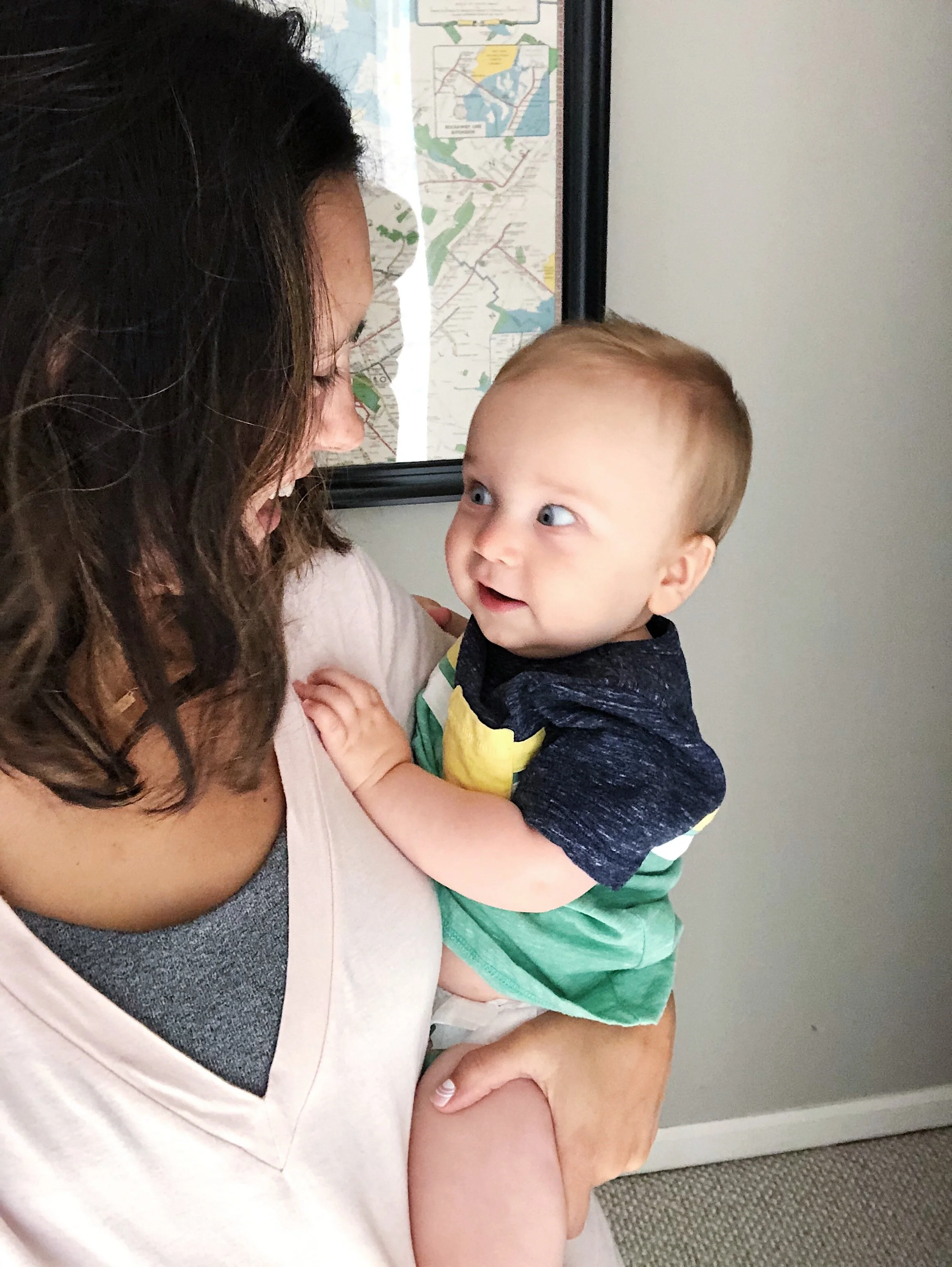How to Identify Abdominal Separation After Pregnancy.
/Hi friends! My fitness inspiration friend Kate from BeyondFit Mom is back with another awesome post-pregnancy post, this time focusing on the abs :) Since I am eager to get back to exercising again, I figure I'm not the only postpartum mom who is a little stumped about the "safe" way to return to a work out regimen. I'm grateful that Kate is here to share her tips about how to repair the abs after giving birth.
What is Diastasis Recti?
A diastasis recti is a separation of the abdominal muscles, what many refer to as the “six-pack” muscles. This separation occurs along the band of connective tissue that runs down the middle of the rectus abdominis. This band of tissue is called “the linea alba, but we’re going to refer to it as the “midline.”
Some degree of abdominal separation will always occur during pregnancy. This is because everyone’s core muscles have to expand to give room for the baby to grow! During pregnancy, separation occurs down the midline as a result of the force of the uterus pushing against the wall of the abdomen coupled with the influx of pregnancy hormones that soften connective tissue.
60% of pregnancies the abdominal separation will be wider than 2 – 2.5 finger widths apart and you will be considered to have diastasis recti. Diastasis recti can occur anytime in the last half of pregnancy, but most commonly occurs after pregnancy when the abdominal wall is lax and the thinner midline tissue no longer provides adequate support for the torso and internal organs.
A small amount of widening of the midline happens in all pregnancies and is normal. In many cases this abdominal separation, also known as diastasis recti, will heal naturally post birth with no medical intervention, however, for many, the tissue remains too wide. A midline separation of more than 2 to 2.5 finger-widths, or 2 centimeters, is considered problematic.
What’s the Problem with a Diastasis Recti?
A diastasis recti can lead to pelvic instability due to abdominal wall weakness. This instability can create a number of problems.
These include:
- Abdominal discomfort with certain movements, such as rolling over in bed, getting in/out of bed, and lifting heavy objects
- Umbilical hernia
- Pubic symphysis pain
- Sacroiliac joint pain
- Low back pain
- Pelvic floor dysfunctions, such as urinary, fecal and flatulence incontinence and pelvic organ prolapse
In addition, a diastasis recti can change the appearance of the abdomen. The skin may droop, and some patients may even develop an actual hernia through the midline.
Also, some moms may complain of continuing to look pregnant…. Even YEARS after having their baby.
How to know if you have Diastasis Recti...
1. Lay on your back with your knees bent and your feet flat on the floor.
2. Exhale and lift your head and shoulders off the floor – put one hand behind your head to support your neck.
3. Make sure you contract your rectus abdomens muscle – bring your rib cage closer to your hips, rather than just bringing up your head.
4. Place your fingers in a horizontal position across your belly button and feel above, over and below the belly button. Assess the width and depth of the gap. It is also relevant if there is a gap how firm or loose the sheath under the belly button feels.
Diastasis Recti Warning
The urge to return to traditional ab exercises like crunches, may be strong when you feel like you’re ready to workout again after having a baby, but if you have diastasis recti, you must be cautious about what time of abdominal exercises you return to.
Always be sure you’re engaging your transverse abdominal and be very wary of any ab exercises that increase the intra-abdominal pressure.
Intra-abdominal pressure is the real problem behind diastasis recti and the “mommy tummy”.
Pushing your body too far, or rushing into hardcore ab exercises could be doing more harm than it does good if you have diastasis recti.
Avoid: Any exercise that will cause your abdominal wall to bulge out upon exertion.
NOTE: If at any point through your workout you notice signs of core weakness, please consider a modification until the entire workout can be completed without any of the following:
- If you are straining from within your abdomen or pelvic floor during the exercise
- If you leak urine when doing any of the exercises
- If you notice pelvic or lower back pain during or after the exercise
- If you feel unstable in the core during the exercise
- If there is bulging or “coning” in your abdomen during the exercise
There you have it! Any questions you have or advice you can lend about your own experience with diastasis recti and postpartum fitness? I'd love to hear from you!
Many thanks to Kate for this one! You can follow her on instagram for fitness tips, encouragement and accountability :)
P.S. - Kate's 5 Fitness Tips for Postpartum Moms and the 5 Ways I Make Time for Exercise.































